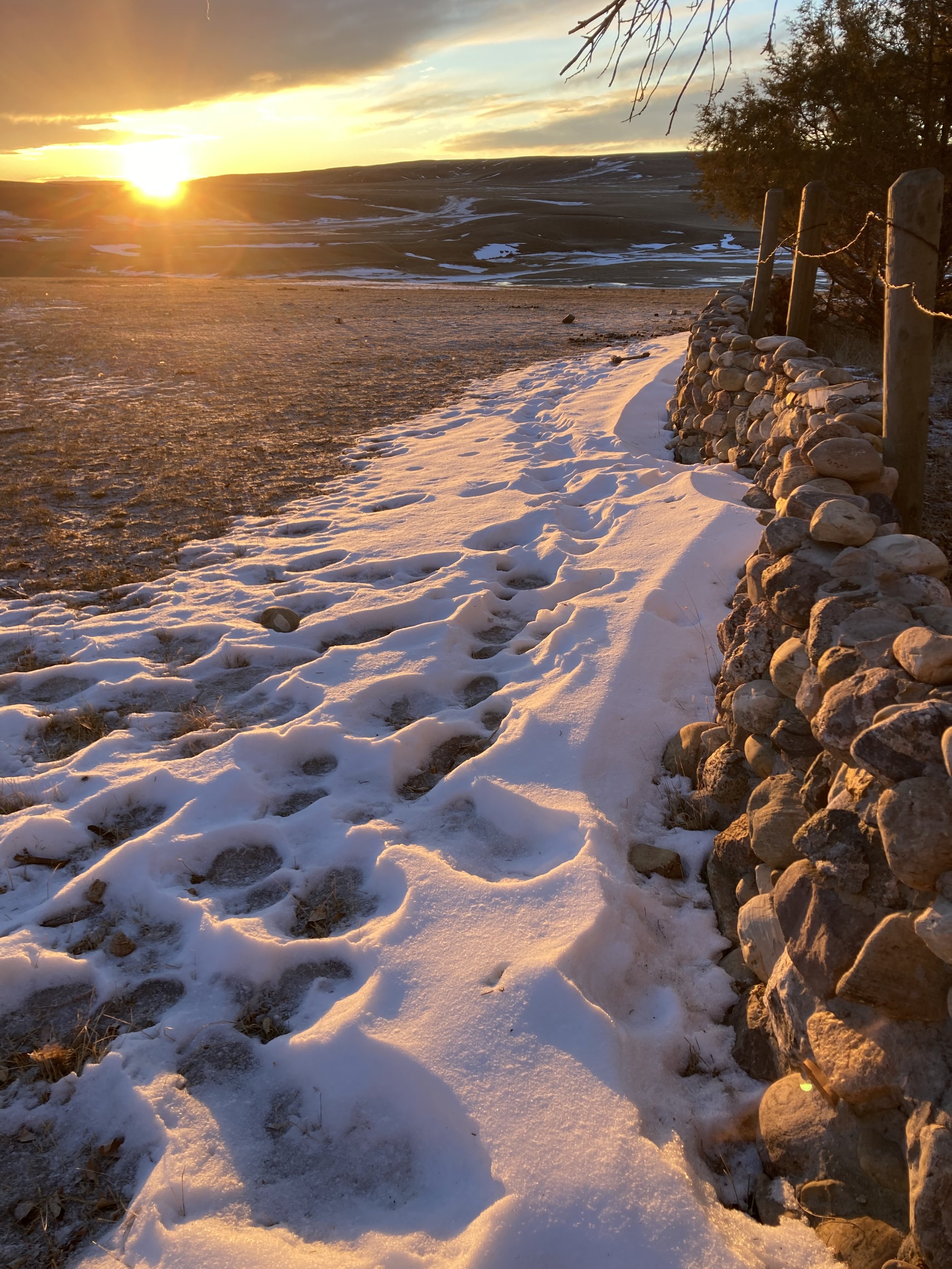Ranching is an Art Form
The low mew of a cow to her calf.
The tactile luxury of a soft wool blanket.
The checkerboard of grazed and ungrazed golden grass swaying in the wind at sunset.
These are among the music, poetry and paintings of ranching, all of them a completed masterpiece by two artists working cooperatively – a rancher with Nature.
Art is the expression of an emotion or a comment on a condition.
Art, like ranching, wells up from a fundamental need deep within the soul.
That fundamental need is creativity insisting that the artist express herself – in a dance, a painting, a pot, a floral arrangement, a song or a story.
The rancher creates art where she cares for a newborn calf who hears his mama sing.
Where she moves cattle and sheep to graze, choosing how the sun will paint golden grass seeds against green blades.
Where she trails her herd across the earth, watching the footprints create stunning sculptures.
Where she accepts the gift of a fleece from a ewe and spins it into a coat.
Where she learns the lessons that Nature teaches, then shares them in stories and legends.
Art only appears to be passive.
We might appreciate art when we happen to hear a song or the silence of glistening snow or admire the angles and curves of a pot or a stream.
But making art requires – demands actually – effort and attention and focus on an action that yields the stroke, the word or the note that communicates to the senses.
The artist must take courage in hand to satisfy that fundamental need to express her soul.
The art is already there, waiting to be expressed.
Ranching, too, is an expression of emotion and a comment on a condition.
A rancher partners with the sun and wind and rain and earth – Nature’s artists – to interpret the lives and deaths of the land and animals.
Baby calves, lambs, grass, shrubs, grizzlies, protozoa, fungi and bacteria; bare dirt that blows in the wind, parched cracked soil, ravens and eagles circling in the sky searching for their turn at a carcass, steers that feed people so their nutritious gift might be used in productive effort – all are sculpted or destroyed by the rancher’s hand.
Each appears to be a completed work, but each requires – demands actually – a rancher’s effort and attention and focus on actions that yield the expression of life and death on her land.
The rancher must take courage in hand to satisfy that fundamental need to express her soul.
The art of life and death are already there, waiting to be expressed.
The rancher, like the artist, must ranch, must express the emotion of life and the condition of the earth because the inner need cannot be subdued.
The result is the art—the steers and lambs shipped, the wool sheared, the grass popping from the ground in the spring and grazed in the fall, the unseen life that works among the mysterious networks to feed the grass, use the sunlight and drink the raindrops.
While art results in a completed work for others to interpret, the artist’s personal reward -- as is the rancher’s -- is the process.
The reward comes from the constant, obsessive consideration of what can be done, what should be done and how to do it; how a brushstroke here or a word spoken there, a horseback ride now or a hay laid down tomorrow will result in a message to a microbe or a planet.
The artist and the rancher must show up, must focus, must create.
Each can only ignore and avoid until the choice becomes expression or extinction.
Either the soul creates or withers away, disappears into thin air.
Poof.
